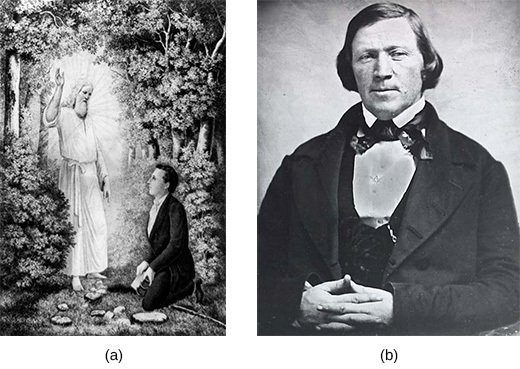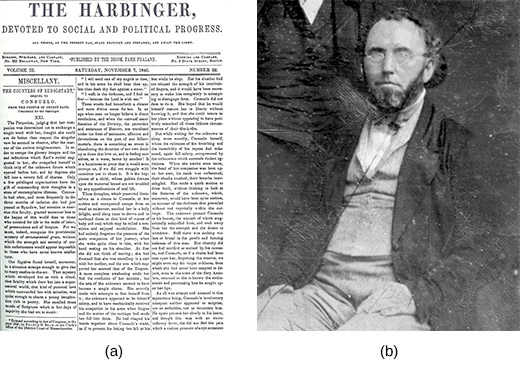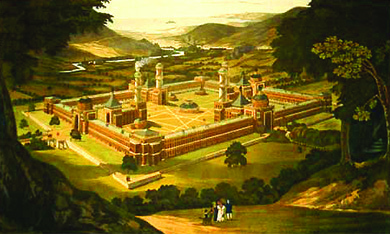| << Chapter < Page | Chapter >> Page > |

Not all utopian communities were prompted by the religious fervor of the Second Great Awakening; some were outgrowths of the intellectual ideas of the time, such as romanticism with its emphasis on the importance of individualism over conformity. One of these, Brook Farm, took shape in West Roxbury, Massachusetts, in the 1840s. It was founded by George Ripley, a transcendentalist from Massachusetts. In the summer of 1841, this utopian community gained support from Boston-area thinkers and writers, an intellectual group that included many important transcendentalists. Brook Farm is best characterized as a community of intensely individualistic personalities who combined manual labor, such as the growing and harvesting food, with intellectual pursuits. They opened a school that specialized in the liberal arts rather than rote memorization and published a weekly journal called The Harbinger , which was “Devoted to Social and Political Progress” ( [link] ). Members of Brook Farm never totaled more than one hundred, but it won renown largely because of the luminaries, such as Emerson and Thoreau, whose names were attached to it. Nathaniel Hawthorne, a Massachusetts writer who took issue with some of the transcendentalists’ claims, was a founding member of Brook Farm, and he fictionalized some of his experiences in his novel The Blithedale Romance . In 1846, a fire destroyed the main building of Brook Farm, and already hampered by financial problems, the Brook Farm experiment came to an end in 1847.

Robert Owen, a British industrialist, helped inspire those who dreamed of a more equitable world in the face of the changes brought about by industrialization. Owen had risen to prominence before he turned thirty by running cotton mills in New Lanark, Scotland; these were considered the most successful cotton mills in Great Britain. Owen was very uneasy about the conditions of workers, and he devoted both his life and his fortune to trying to create cooperative societies where workers would lead meaningful, fulfilled lives. Unlike the founders of many utopian communities, he did not gain inspiration from religion; his vision derived instead from his faith in human reason to make the world better.
When the Rappite community in Harmony, Indiana, decided to sell its holdings and relocate to Pennsylvania, Owen seized the opportunity to put his ideas into action. In 1825, he bought the twenty-thousand-acre parcel in Indiana and renamed it New Harmony ( [link] ). After only a few years, however, a series of bad decisions by Owen and infighting over issues like the elimination of private property led to the dissolution of the community. But Owen’s ideas of cooperation and support inspired other “Owenite” communities in the United States, Canada, and Great Britain.

A French philosopher who advocated the creation of a new type of utopian community, Charles Fourier also inspired American readers, notably Arthur Brisbane, who popularized Fourier’s ideas in the United States. Fourier emphasized collective effort by groups of people or “associations.” Members of the association would be housed in large buildings or “phalanxes,” a type of communal living arrangement. Converts to Fourier’s ideas about a new science of living published and lectured vigorously. They believed labor was a type of capital, and the more unpleasant the job, the higher the wages should be. Fourierists in the United States created some twenty-eight communities between 1841 and 1858, but by the late 1850s, the movement had run its course in the United States.
Reformers who engaged in communal experiments aimed to recast economic and social relationships by introducing innovations designed to create a more stable and equitable society. Their ideas found many expressions, from early socialist experiments (such as by the Fourierists and the Owenites) to the dreams of the New England intellectual elite (such as Brook Farm). The Second Great Awakening also prompted many religious utopias, like those of the Rappites and Shakers. By any measure, the Mormons emerged as the most successful of these.

Notification Switch
Would you like to follow the 'U.s. history' conversation and receive update notifications?